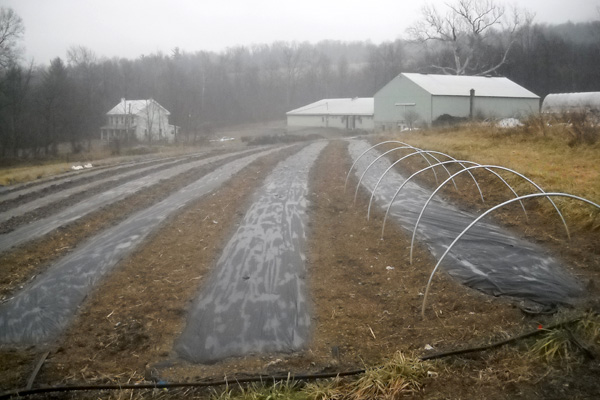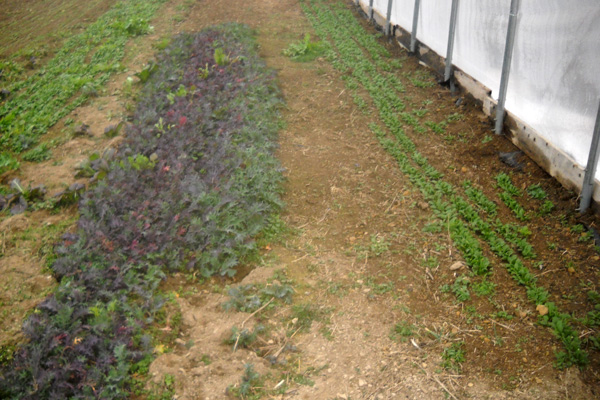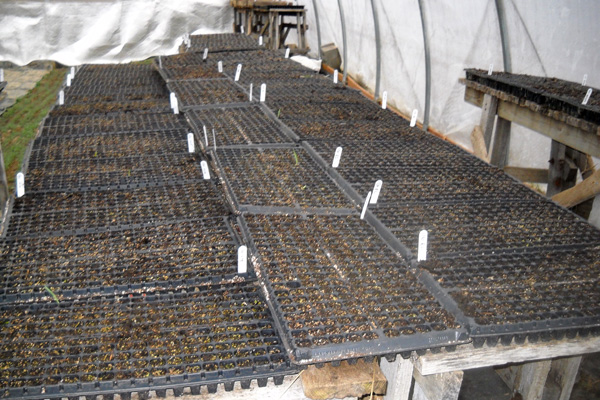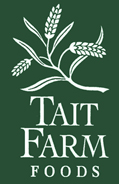-

Erin Donahue -

Christina Barkanic -

Brittany Trott -

Emily Wiley -

Jessica Reilley -

Chris Raines -

Will Nichols -

Emily Reddy -

Michele Marchetti -

Michele Frank -

James Gherardi -

Kit Henshaw -

Christina and Erin -

Kim Tait -

Erin McKinney -

Steve Spanelli -

Sam Komlenic -

Katherine Taylor Grofic -

James Eisenstein -

Jamie Oberdick -

Anna Lombardo -

LacCreta Holland -

Tony Ricci -

Local Food Journey -

Laura Young -

Kristin Camplese -

Harrison's Fresh + Local -

Danielle Matalonis -

Kristine A. -

Linda Weaver -

Naomi Elle Schwartz -

Dana Stuchul -

Cara McShane -

Brittany Smith -

Jessica Illuzzi - Frosty
-

Jessica Paholsky -

James Sechrengost -

Brad Yeckley -

Maya Althouse -

Jordan Reabold -

Kim Chase -

Maria Bryant - Alexandrea Scott
Farm Diary: Late Winter on the Farm
Posted by James Eisenstein on 02/29, 2012 at 10:39 AM

Mild fall weather let us prepare beds for early spring planting. Photo Credit James Eisenstein.
Every occupation has its rhythm. The rhythms of farming are special because they coincide with earth’s yearly swing around the sun. January and February provide an opportunity to contemplate the prospects of the upcoming growing season. So my unpaid field hand’s diary for 2012 begins with news from winter.
If farmers didn’t begin each year without an optimistic view of how wonderful the coming season will be, they might plant nothing. Optimism reigns now, before the inevitable failures begin. When they come, we can only hope successes will offset failures sufficiently to start again the following year.
By now, plans for the new year are mostly hatched. At Jade Family Farm, our seeds have been ordered; last year’s fields have been cleared of tomato stakes, trellises, drip line, and ground cover; and some beds have been prepared for early spring seeding and transplants. On warmer days we’re able to prepare and plant beds in the high tunnel with cold-hardy crops. We seed onions and scallions where they share space with spinach and kale.

Kale and Spinach are already growing in our high tunnel. Photo Credit James Eisenstein.
Every year, we make a few additions to our fruit plantings. This spring, we will order our first persimmons and perhaps some paw paws. We will also supplement our small grape arbor with three seedless table grapes for family use.
Farming organically requires much more thought, planning, and skill than I ever imagined. It requires an intricate dance involving multiple tasks and tradeoffs. As the exalted “Director of Fruit Operations,†I spent considerable time devising a schedule of tasks in the orchard and berry patches. We need to prune the fruit trees and currants while they are still dormant, cut down last year’s raspberry canes and put down their drip irrigation lines, fertilize the rhubarb and the orchard, order ingredients for our organic sprays, and buy insect monitoring traps —all by about mid-March.

Seed flats in the green house for early transplanting. Photo Credit James Eisenstein.
I also read about how to provide habitat and nectar supplies for native pollinators, butterflies, and hummingbirds. I’ve ordered a variety of herb and flower seeds for permanent plantings to encourage them (a practice some call “farmscapingâ€).
Every winter also brings us face-to-face with a long list of “Winter Projects To Do.†We need to repair damage to and improve our basement quarters for interns, organize and clean our packing room, and construct our coop for laying hens on the farm wagon we bought at auction. Marketing for our CSA (harvest share) program and attending meetings (oh joy!) take John away from everything else.
These long winter days may not require as much time and energy as mid-season, but if you think farmers kick back, nosh bon-bons, and suck on a pipe, think again.
![]() Author: James Eisenstein
Author: James Eisenstein
Bio: Unpaid Field Hand at Jade Family Farm | Former Penn State Professor
- Our Local Food Journey comes to an end
- Winter isn’t a quiet time at the farm
- Get the taste of garden season right now by growing herbs indoors
- All you need to know about PASA’s Farming for the Future conference









NO COMMENTS